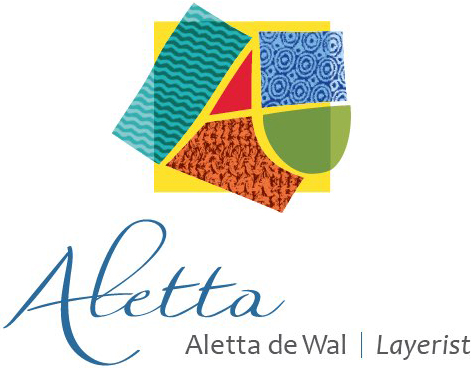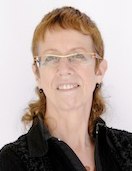Fine Art Photographer Connie Bransilver Captures Fragility and Gentleness on Seven Continents
__________________________________________
 |
|
The Kiss - Gunung Leuser Sumatra, Indonesia ©Connie Bransilver www.conniebransilver.com |
I first met Connie a few years ago when I was presenting at the NANPA Summit. She has excitement and passion for her art and her professional success that strikes you immediately.
"I have been photographing nature, people, dance and anything of beauty since I was 16 when I got my first real camera. After my youngest daughter was nearly through college, I decided it was my turn, so I quit my day job and gave myself five years to build a business. I figured that if I failed, I would still be young enough to go back to a day job, and if I succeeded, I had enough time to create a real career.
"I knew that I had to ratchet up my technical skills fast, so I enrolled in the Corcoran School of Art and took night courses at the Smithsonian for a year. I showed my work to anyone who would take the time to look and comment honestly, and I listened intently. I still thrive on constructive criticism.
"Many photographers, especially now with excellent digital hardware and software, can create great images from time to time if they are reasonably dedicated."
"Once you commit to being a professional, you don't just produce when you feel like it - you have to be consistent and produce the best all the time.
"What separates the professional, however, is a consistency of excellence, day in and day out, wet or dry, producing the images required on assignment or for self-assignment, telling stories in one frame. The other half -- yes, half -- besides consistency and excellence in production, is relentless marketing combined with a thick skin. Ok, I have never learned to love rejection as advised, but at least it no longer bothers me much. And, as Michael Jordan said, 'If you fall down, get up.'
"I am first, last and always a conservation photographer, but in order to communicate my passion, to get my message of love of the natural world across, to connect, I have to apply all the rules and broken rules of the best artists, so I view all kinds of art to continue to communicate well.
 |
|
Ghost Essence © Connie Bransilver |
"At home, in the Everglades ecosystem, I chronicle the fragility of this unique but subtle wetland, and especially, I have featured the ephemeral, mostly epiphytic, native orchids.
"I have written two books about this misunderstood land - this unique and subtle, flowing swamp environment.
- The first is a general overview entitled, 'Florida's Unsung Wilderness: The Swamps.'
- The second uses native orchids to explore the wild places in the land and in one's heart. It could only be called 'Wild Love Affair: Florida's Native Orchids.'
 |
|
Pink Tutu ©Connie Bransilver |
 |
|
© Connie Bransilver Vatateza, Madagascar |
"Madagascar is also my love, a unique piece of Eden where more than 80% of the flora and fauna are endemic, that is, found nowhere else. The lemurs first attracted me, and as a Duke University graduate, I was easily pulled into the activities of the Duke Lemur Center. Under National Geographic and other grants, two Duke scientists and I discovered what is either a new species or sub-species of Sifaka (Propithecus) Diademed lemur in 1999. www.Sadabe.org.
"I have been working with that research team and other teams in Madagascar since 1995 and lead small groups to Madagascar every year to share my love and enchantment with this strange land and its gentle people and their unique cultural amalgam.
"I have received assignments from Wildlife Conservation Society, the Agency for International Development, several small independent research organizations, and now, a multi-year, on-going assignment from UNESCO-Asia to photograph World Heritage Sites and Biosphere Reserves throughout Asia. Asia is exploding onto the international stage. There are many rich cultures and civilizations to understand, and some of the most awesome landscapes and animals on the planet. It is all about interrelationships, interconnected cultures, and our becoming more sensitive to the 'other.'
 |
|
Dream Softly - Calcarious Reef_Australia ©Connie Bransilver |
"While I began focusing on technical expertise, I have moved more toward connecting emotionally with viewers, toward abstraction, toward using color and design and movement to bring the viewer into the image.
 |
|
Market Lady Karimun Jawa IN ©Connie Bransilver |
"If I am remembered for anything, I hope it will be that I cared and shared and loved this earth, and that I left the evidence in memorable words and images connecting humans with one another and with the natural world. And that I left daughters with the same ethic toward life on this earth."
"While I sell many of my images through three agents, these are chiefly to maintain cash flow, and they include travel and lifestyle along with my core images focusing on conservation and indigenous cultures.
"I am adding video to my still image library because that is the direction of the market. I love challenges and, having been a dancer in my youth, I see and understand the power of movement to engage viewers.
"A retrospective? I am still charging forward too fast to look back. You can do that in 30 years or so, after I am gone. Besides, when I look back at some of the amazing opportunities I have had to photograph unique occurrences in the field, I am frustrated that I did not have then the equipment I have at my disposal now."
"Energy - I have it. Lots.
"There is no such thing as a typical day, but I will describe two.
- "When I am in the field, on assignment or self-assignment, I am up well before dawn and out ready for first light, usually in a place I have scouted previously. I will shoot for three or four hours in the sweet light, have a look at what I have done, maybe changing location several times, and either switch to infrared which is best in harsh mid-day light, (color photography is not), have some lunch, and reposition for the evening light, shooting past sundown in many instances. Sometimes I will continue after dark as well, covering entertainment or night skies, etc. After getting back to wherever 'back' is -- home, perhaps, or hotel or tent -- I will download the day's images, check them for camera quality, etc., and recharge batteries, take some notes on the day's work. Then try to get a few hours' sleep before it's all repeated.
- "When I am not in the field, I am at the computer processing the images, sending them to agents or working with the organization who assigned the shoot. There is a lot of back and forth communication as well as working with the images, organizing and labeling them, writing articles, pitching articles, marketing in all its many aspects. Research is never-ending either, but thanks to the internet it has become much easier to prepare for shoots -- for the only way to make effective images is to know what is going on -- and easier to write or lecture or otherwise put together exhibitions of the work.
"And by the way, I exercise every day when I am not in the field - yoga first, shower next, then work through till 7:00 or later. At the end of the day I have the ability - learned from being a working wife and mother - to shed everything and be a human being in the evening."
"I can hardly list them all. I have been very lucky.
- "In 1992 in the Tai Forest on the border between Ivory Coast and Liberia, my guides took me into the forest before dawn to meet the community of chimps when they emerged from their night nests. As we approached in the half dawn I saw several large bear-like lumps on the ground. As instructed, I squatted down to their level, near the Alpha male named 'Fitz.' We looked straight into each other's eyes, his deep brown and guileless, mine full of awe and respect, as he wandered nearer, never wavering his eyes. When he was about three feet from me and we were face to face, he gently picked up a small pebble and
reached toward my foot, and dropped it. I knew I had seen great intelligence, and maybe he saw my dedication to his survival. He turned away, and my guide said Fitz liked me, so we followed him all week. (About 6 months later almost every individual in the Tai community died of Ebola, probably disturbed by Liberians fleeing through the forest.)
Intelligent Thought-Chimpanzee at Dusk_Tanzania ©Connie Bransilver
- "I have worked in three research sites in three countries with scientists tracking and studying chimpanzees, watching, photographing, enjoying the lives of wild chimps for months at a time, and producing a number of unique images used for research and for conservation advocacy.
- "After three fruitless expeditions with the Duke Lemur Center team trying to find a particular rare species of Sifaka lemur (Propithecus diadema diadema), on the fourth we discovered and caught, for captive breeding, three individuals. I insisted they were not that species, and indeed, I was right. We had discovered a new community or a new species or sub-species (the scientific paper has not been written yet) of Sifaka lemur, called Sadabe.
- "Another high point was producing a National Geographic Explorer segment based on that research.
- "Most recently, while on assignment for UNESCO-Asia for nine weeks in the fall of 2009, I spent ten days in the Sunderbans south of Kolkata, India. A BBC special on the Ganges ended with 'Only the brave go into the Sunderbans,' meaning that the man-eating Royal Bengal Tigers still eat an average of one human being every other day in these mangrove swamps. I lit incense to the multi-religion goddess, Bonabibi, to let me see a tiger, and two hours later, after sunset, she was swimming across a 200 yard channel. My boat fell in behind her, and I saw and photographed, for several minutes, one of the most powerful and magnificent animals on the planet. And she turned and looked at me. Did she wink? Was she Bonabibi in disguise?"
 |
|
Royal Bengal Tiger_Sunderbans_India_Oct 2009 ©Connie Bransilver Royal Bengal Tiger_Sunderbans_India_Oct 2009 |
"I have no idea how to define success. I know I am happy and pleased to be making an impact, however small. I am a part of important organizations working toward ethical conservation photography. And I can pay my bills, have a fair amount of notoriety, recognized as a conservationist (tree hugger), and have a body of work to leave behind, along with two daughters, one granddaughter and a husband who loves me, as I love him. I enjoy life and celebrate it every day!"
"Zillions of hurdles but for the most part, I just ignore them. The only one that stings is the charge that photography is not art, after you have worked so hard to make magic with your art."
 |
|
World View-Madagascar ©Connie Bransilver |
"Legitimacy from my credentials, like Unesco and National Geographic. A professional approach is the only approach so I don't know how the non-professional approach to anything would be. I don't mean that to sound arrogant, but what I mean is that I tend to demand 100% from myself in my art as well as my life. Work hard; play hard, and have fun."
"Twenty years ago Jane Goodall was staying with us, and one evening at dinner, when I said I was going to the Tai Forest in Ivory Coast, she suggested I call Nick Nichols, the rainforest photographer at National Geographic, for some tips. I hesitated, but did so. 'Jane suggested I call you for some tips for rainforest photography.' I was quaking. But Nick took the next half hour to talk with me, and soon after, when we met, he took time again, encouraging me, sharing his 'secrets' -- keep yourself and your equipment dry, know your subject, be patient and persistent -- and he has been a dear friend ever since, the best, a true generous professional, with the highest ethical standards.
"I have been unbelievably lucky. People have opened doors for me all along, and I try to do the same, passing it forward. In fact, my life's rules -- all four of them -- begin with Sherpa Tensing Norgay's advice: 'Be great; make others great.' I try to live that, and what goes around, comes around, so make it good."
"In marketing, everything works and nothing works, but word of mouth, who you know, works best of all.
- I have a few printed promotional materials, and a colorful business card.
- My books were published by a reputable publisher and I use them to market.
- I always pre-sell the next thing when I have made a sale.
- Colleagues are important, so I participate in photographic and art organizations, and help others.
- With my husband, we have about 1600 names on our database and I or we know each one. Some are people I've known since grade school. I remember people, and keep in touch.
- Now, with Facebook, it is both easier and harder -- harder because it's easy to spend too much time chatting, but so satisfying to keep in touch with friends all over the world."
"Photographic equipment has changed radically. I started with black and white box cameras, advanced to high quality slide film, and then proceeded through various printing techniques, each time-consuming and tedious but satisfying. Digital technology in cameras, lenses, computers -- hardware and software -- printers and papers, canvas, and now even metals, change almost moment by moment, so to be a photographic artist today means keeping ahead of all the technology as well as creating a visually compelling and artful image.
"I'm now experimenting with video because movement has always been important to me. I was a dancer, horseback rider; I see movement in animals. I want to integrate movement with music and stills.
"Images for well-known photographers are now selling for hundreds of thousands of dollars, so mine can sell for a few thousand."
"I should probably take more. I only put low resolution images online, and add ©Connie Bransilver to every one. I could, and probably should, consider watermarking my images, but so far, I have not. My agents do, however, so those shown through them do have a watermark.
"Some years ago I had an odd situation arise. I saw a travel brochure with one of my unique images prominently displayed, without a byline of copyright. It was a reputable travel company, so I contacted them to ask how or where they got the photograph. They said they had bought it, and showed me where -- in those days CDs were sent rather than Internet transfers. It and others had come from a company in India. I tried to reach them, and ultimately had to use subterfuge, but found out they had downloaded lots and lots of images and put themselves in the business of selling those stolen images, but I could not touch them effectively. I had to chalk it up to experience."
"For emerging artists, keep your day job while you build your business. If that means working 80-hour weeks, well ... yes - do that. Build your expertise, seek a niche for yourself, and market yourself in whatever way is appropriate for your type of art.
"For mid-career artists, expand, diversity, set really high goals, and steps to get there. Life rarely happens as you expect or plan, but be ready for that gold ring, and be ready to grab it. That means, be really, really good at what you do, and do it with enthusiasm. Malcolm Gladwell is right, in 'Outliers,' that it takes some talent, some opportunity or 'luck,' and perhaps mostly importantly, 10,000 hours. I can't tell you not to get discouraged; just don't give up.
"For succeeding in this economy, for a photographer, diversify, diversify, diversify. Sell through multiple sources and market in many ways. Get out there and meet people. Find what 10 things work for you and do all of them -- at once, over and over again. Be sensitive to trends. Try to be a step ahead."
"A.C.T. has helped me focus more, in the midst of all the cool things we could do. A.C.T. has been aimed more at my husband's career, and we have followed Aletta's advice. In addition, Robin Sagara knows us, and especially Nicholas, better than anyone. She is magic!
"Now, though I wanted Aletta to coach Nicholas, she has nudged me into the creative side of a joint effort, the Guardians of the Everglades project. Aletta quickly saw that such a complicated endeavor, with paintings, banners printed on silk, video interviews, photographs from another artist, music, marketing, raising money through grants and sponsorships, etc. would take me entirely out of my creative career if we did not hire an organizer. We just did, and already I feel liberated.
"Bringing my banking and legal background into our art careers, I have learned to sell and can assess risk, downside exposure and upside potential, so we contracted for a booth at a major new contemporary Art fair in Naples, as a lead up to the Guardians of the Everglades project. That multi-media installation will be debuted at a major museum/estate in Miami. That introduction was through a nature/conservation photographer for whom I opened doors seven or eight years ago. His new wife is the executive director.
"Nicholas and I rely on Aletta's wise counsel. Period."











